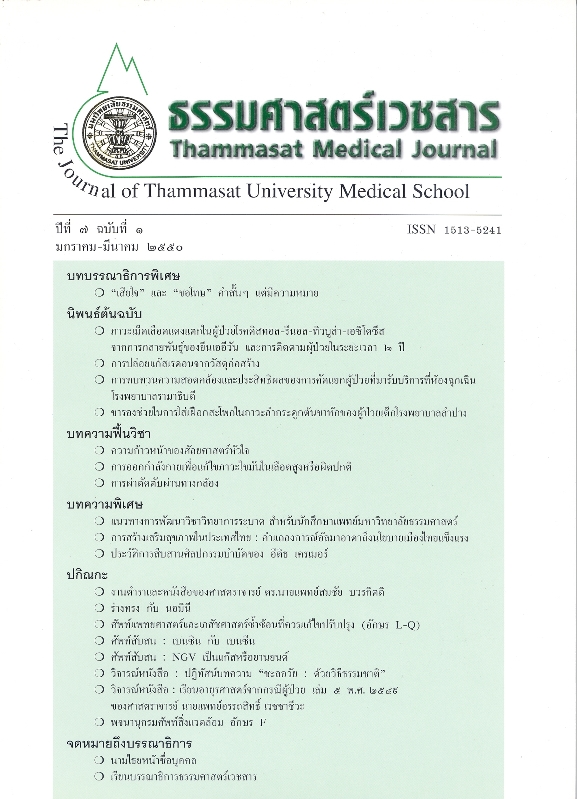Nurse triage in an accident and emergency department Ramathibodi Hospital: an audit
Abstract
Back ground : Triage, the French word, means sorting process. It has been initiated since the First World War and then developed to be the cornerstone to categorize the patients in the emergency department (ED) that the ratio of personal and resource to patients are out off proportion. Triage has been well-developed in many countries that have become the role model such as Australia and New Zealand (Australasian Triage Score: ATS), United Kingdom (Manchester Score) and Canada (Canadian Triage Score). In Thailand, Emergency Medicine has recently been developed, national triage score and also the triage audit havenût been conducted yet. Some ED initiates their own triage system to categorize the patients who visit ED. The aim of this study is to evaluate the validity and concordance of nursing triage and physician triage at Ramathibodi hospital which is the tertiary hospital and the four-level triage system has been used. In addition, we would like to assess the rate of missed evaluation by the nurse and the effect of triage system to patients' admission.
Material and Methods : The author carried out a descriptive study by reviewing the patientsû record. The charts were randomly studied between May 1st, 2005 and April 30th, 2006.
Results : During the study period, 306 patients who visited ED were enrolled, 146 cases were male (47.7%). The first three most common chief complaints were fever (58, 20%), trauma (56, 19%) and abdominal pain (52, 18%). The concordance between nursing and physician triage was significant correlated (92.8%). The nursing over triage rate was 58.8%. The factor that increase the risk of nursing over triage were the younger patient (OR = 0.988, p-value = 0.026), the patients with GI symptoms (OR = 3.15, p-value = 0.047), trauma patients (OR = 4.78, p-value = 0.003) and the patients who had fever (OR = 8.53, p-value = 0.004). Physician triage had significantly influenced to the patientsû admission (p-value = 0.006).
Conclusion : The Ramathibodi four-level triage system was effective; even though there was a significantly different between the nurse and physician triage. However, the concordance between nurse and physician triage was highly correlated. Additionally, the discrepancy can be reduced by establishing a national triage system, nurse training program and periodic reviews of the triage system.


